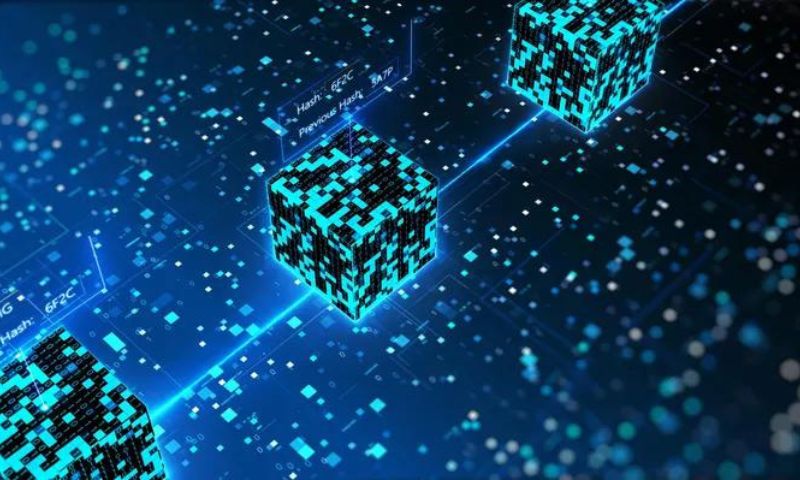Blockchain Explained: Mastering Consensus in a Decentralized World
Trust is gold in our connected world. It’s what makes trade, deals, and the very fabric of our economy work. Now enter blockchain, a tech marvel where trust is coded, not just promised. It thrives on sets of rules that everybody follows, no bosses needed. Big question though: How does blockchain achieve consensus? It boils down to a fair game of agreement in a global network. In this deep dive, you’ll see how this digital handshake seals the deal, keeping our virtual coins and contracts tight and right. Let’s tear down the hype and explore the real talk of consensus in blockchain. It’s the wizardry making sure every move is legit. Strap in—your guide to blockchain’s rulebook starts now!
Understanding the Basics of Blockchain Consensus
The Role of Consensus in Maintaining Decentralized Networks
Imagine blockchain as a puzzle. A big one where everyone’s piece matters. Now, how do we ensure that all the pieces fit together just right? That’s where consensus comes in. Consensus is the heart of blockchain. It’s how all nodes, or computers, in a decentralized network agree. They decide what transactions are real. This stops cheaters and keeps the blockchain reliable.
Take mining as an example. Miners use powerful computers to solve complex math. This process verifies and adds transactions to the blockchain. Each miner races to find the solution first. The winner gets to add a block to the chain. This is part of the “proof of work” system. It uses a lot of power but secures the blockchain.
There’s also “proof of stake”. Instead of mining, users who own coins keep the network safe. These users lock up some of their coins. This is their “stake”. It’s like saying, “I promise to be honest.” If they lie, they lose their stake. It’s a different approach to achieve the same goal: trust without needing to trust each other.
Common Misconceptions About How Consensus is Achieved
Some people think you need to own a giant computer to join in. That’s not true. Even regular folks can be part of a “proof of stake” blockchain. They just lock some coins and become validators. Validators check transactions, like miners, but without big energy bills.
Many also believe it’s just about majority rule. But it’s smarter than that. Consensus protocols use math to avoid problems. One problem they stop is the “double-spending” issue. This means someone can’t spend their coins twice.
Another thing people get wrong is about control. No one person or group owns the blockchain. It’s like a community garden. Everyone works together to keep it nice. Any change has to be okay with most users. This way, it’s fair and open.
Even with big words like “Byzantine Fault Tolerance,” it’s not too complex to understand. Think of it as a guard against confusion. If some nodes fail or lie, the rest can still reach a true agreement.
Finally, a big worry is that bad actors could control more than half the network. This is the “51% attack”. It’s hard to pull off, especially on larger and more secure blockchains. Smaller ones do watch out for this risk, though.
In all this, a blockchain’s code rules. It’s strict and follows the consensus protocols. Real trust comes from this code. It’s like an unbreakable promise to follow the rules.
So, that’s it. Consensus ensures everyone plays by the rules. It’s crucial for trusting one another without really having to. With it, blockchain can change how we think about security and cooperation in our digital world.
Analyzing Popular Consensus Mechanisms
Proof of Work: Security and Energy Considerations
Let’s talk about how Proof of Work, or PoW, keeps a blockchain safe. It solves puzzles. These puzzles keep all users honest. Why? Because they’re hard to solve, but easy to check. It’s like a race where solving the puzzle equals mining a new block. The winner gets new coins as a reward.
Proof of Work is not just a race; it’s the backbone of Bitcoin. It stops double-spending and attacks on the network. How does it do that? Think of PoW as a huge wall that protects your castle, which in this case, is the blockchain. Attackers must do tons of work to even scratch the wall, making attacks costly and pointless.
But PoW does have a downside. It uses a lot of energy, like a really hungry power-monster. Why? Each puzzle-solver, or miner, uses computers that eat up electricity. We need many miners to keep the network safe, which means more energy gets used. So, people started to worry. They asked, “Can we keep our blockchain safe but eat less power?”
Proof of Stake and Its Variants: Advancing Beyond Mining
Enter Proof of Stake (PoS). It’s like a lottery instead of a race. Here, owning coins is like having lottery tickets. The more you have, the better your chance of being picked to validate new transactions. PoS doesn’t need puzzle solvers. This means it can munch way less power than PoW.
Proof of Stake has cousins, like Delegated Proof of Stake (DPoS). It’s a bit different. In DPoS, coin holders don’t validate blocks themselves. They vote for a few people to do it for them. It’s like choosing a class representative. It can be faster and more energy-friendly. But it also puts more trust in fewer hands.
When you hear “DPoS,” think about voting for a class rep. It’s that simple. A small group takes care of the big jobs, making sure everything runs smooth. They check transactions and make new blocks. Everyone else watches to keep them honest. So, as you see, PoS and its variants share the same idea of lottery over labor. They want to make sure our digital money is safe without using too much power.
In both PoW and PoS, nodes, or computers in our network, play a big part. They check and pass on transactions. They’re like the messengers of the blockchain world. With lots of nodes, our system stays strong and connected.
So, there you have it. We use clever math and strict rules to keep everyone playing fair. We make sure no one cheats, our digital coins are safe, and we try to keep the planet happy too. That’s the heart of blockchain consensus – a blend of security, community trust, and some smart energy choices. What will we think of next?
Technical Deep Dive: Nodes and Algorithmic Governance
The Significance of Nodes in Achieaching Distributed Consensus
Nodes are key in blockchain. They store, spread, and keep data safe. A node is like a tiny computer linked with others to create a network. Each one has a full copy of the blockchain. This helps the ledger stay correct and safe.
When you make a transaction on a blockchain, nodes check it. They use special math called a cryptographic hash function. This turns data into a unique code. If the data changes, so does the code. This stops cheating, like spending the same money twice.
In nodes we trust. They help everyone agree without needing to know each other. Their main job is to confirm that all is fair and nothing’s wrong.
From Byzantine Fault Tolerance to Nakamoto Consensus
Some names sound old but mean a lot for blockchains. Byzantine Fault Tolerance, or BFT, is one. It’s about trust. Imagine if out of a group of generals, some were traitors. How could the loyal ones agree on a battle plan? BFT fixes this problem. With BFT, a blockchain keeps working even if some nodes are bad.
Now, there’s Nakamoto Consensus. It’s named after Bitcoin’s creator. This rule set helps nodes agree on which blockchain to trust. Let’s keep it simple. It uses Proof of Work (PoW). That’s when nodes solve tough puzzles to show their work and get to add new blocks. It takes a lot of computer power and energy, but it’s secure.
But wait, isn’t energy a big deal? Yes, and that’s why there’s Proof of Stake (PoS). In PoS, you can take part in making new blocks if you own part of a coin. This takes less energy than PoW.
There are other kinds too, like Delegated Proof of Stake (DPoS). With DPoS, coin owners vote for a few nodes to make new blocks. It’s quicker than PoW and uses even less energy.
These systems help blockchains run smooth. They make sure no one spends the same money twice. They also protect against 51% attacks. That’s when someone might try to own more than half of the network. It’s tricky, but these rules keep things in check.
Every blockchain picks a system that fits best. They all aim for a fair and secure way to agree on data. That earns trust, and trust is gold in the blockchain world.
Mining and staking are part of this. They help keep the network secure and verify transactions. Miners solve tough puzzles to add blocks and earn rewards. Stakers lock up their coins to get a chance to add blocks too. The block reward system gives them new coins for their work.
Just like a team, nodes and the rules they follow are vital. They help us agree on what’s true in the blockchain world and that’s pretty cool.
The Future of Blockchain Consensus
Innovations in Sharding and Layer 2 Solutions
Sharding and Layer 2 solutions are changing blockchain. What are these, you ask? Simple. They make blockchains fast and scale big! With sharding, we split the network into pieces, or “shards.” Each shard handles its own transactions. This means the whole blockchain can process many transactions at once, not just one at a time. And that’s a game-changer in speed.
Then there’s Layer 2. Think of it as building blocks on top of the main blockchain. They take care of lots of transactions off the main chain. Later, they bundle them to the main chain. This means we keep the blockchain from getting too crowded. It can breathe easy and run smooth. Layer 2 is like a fast train for transactions!
These methods are shaking things up in the blockchain world. They show how we’ll tackle big hurdles in speed and scaling. Talk to any blockchain pro, and they’ll nod in agreement. Sharding and Layer 2 are the future.
The Evolution of Consensus with On-Chain Governance and Smart Contracts
Now, let’s chat about on-chain governance and smart contracts. Ever heard the term on-chain governance? It’s how decisions get made in a blockchain network. It’s all done with rules set in the blockchain itself. No secrets, no backroom deals. Just clear rules everyone plays by. This makes the blockchain fair and keeps trust high.
Smart contracts are another piece of the puzzle. These are like regular contracts, but they run on the blockchain. They enforce rules all by themselves. No need for lawyers or judges. They’re smart, right? And safe! They help people do deals without worry. And they’re a big help in making sure everyone sticks to the consensus rules.
These tech leaps are shaping how blockchains make decisions. They’re bringing power to the people in the network. And that’s what blockchain is all about—fair play in a trusted network. We’re seeing blockchains grow smarter and more reliable. This is thanks to these new tools in our toolbox.
From sharding to smart contracts, the blockchain world is evolving fast. And it’s not slowing down anytime soon. These changes make things better for users. They also make sure blockchains stay strong in the years to come. As an expert, I see these steps as giant leaps for blockchain. They help us build trust and keep our promise of a decentralized world. And that’s worth getting excited about!
In this blog, we looked at how blockchain stays fair and safe. We learned that consensus is key in keeping networks without a central power working right. People often get it wrong about how this agreement happens, but we set the record straight. We then checked out the main ways blockchains make this happen, like Proof of Work and Proof of Stake. We saw that Proof of Work helps keep things secure but uses a lot of energy, while Proof of Stake offers a new path without all the mining.
We dove deep into the tech too, seeing how nodes and smart rules help everyone agree on what’s true. We explored tough problems like Byzantine Fault Tolerance and Nakamoto’s own way of doing things. Last up, we thought about what the future holds. Sharding and Layer 2 might make blockchains faster and cheaper. We may even see new methods where the rules are built right into the blockchain.
I think we’re on the brink of some cool changes. As we find better ways to reach consensus, blockchains will get even more useful. Keep an eye out – this tech is going places!
Q&A :
How is Consensus Reached in Blockchain Technology?
Blockchain technology uses consensus mechanisms to ensure all participants agree on the ledger’s state without a central authority. Different blockchains use various consensus algorithms, including Proof of Work (PoW), Proof of Stake (PoS), and others, to validate transactions and add new blocks to the chain.
What Role Does Consensus Play in the Functioning of a Blockchain?
Consensus is a core component of blockchain functionality. It ensures that all nodes in the network maintain a coherent set of data that is updated and agreed upon following the system’s rules. This alignment is critical to the security and integrity of the blockchain.
Which Consensus Mechanisms are Most Commonly Used in Blockchains?
The most common consensus mechanisms used in blockchains are Proof of Work (PoW) and Proof of Stake (PoS). PoW requires miners to solve complex mathematical problems, while PoS involves validators who are chosen to create new blocks based on the number of coins they hold and are willing to “stake” as collateral.
Can Blockchain Consensus Be Achieved Without Energy-Intensive Mining?
Yes, energy-intensive mining is not a necessity for achieving blockchain consensus. Alternative mechanisms like Proof of Stake, Delegated Proof of Stake (DPoS), and Proof of Authority (PoA) offer more energy-efficient methods for reaching consensus on a blockchain.
How Does A Blockchain Maintain Security Through Consensus?
A blockchain maintains security through consensus by ensuring that each transaction and block is verified by multiple nodes before being added to the ledger. This distributed agreement prevents fraudulent transactions and unauthorized alterations, as altering the ledger would require overwhelming the consensus process, which is computationally impractical in a well-designed blockchain.


